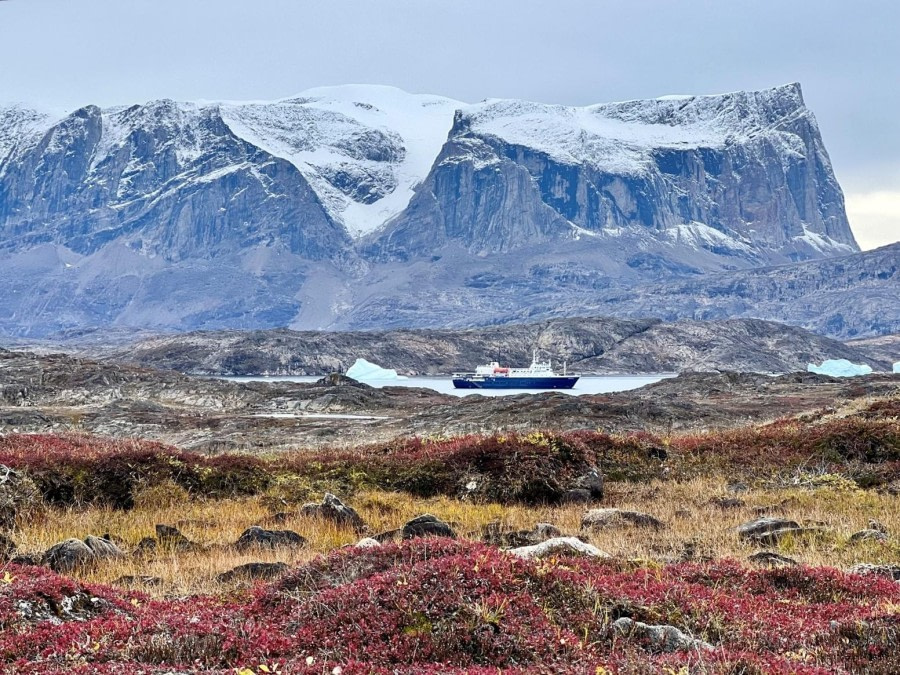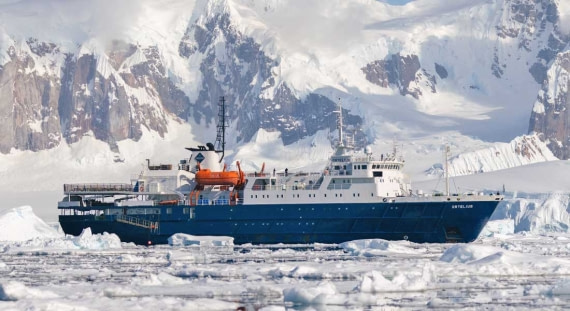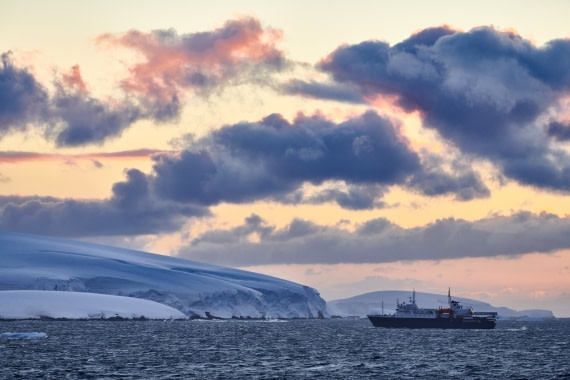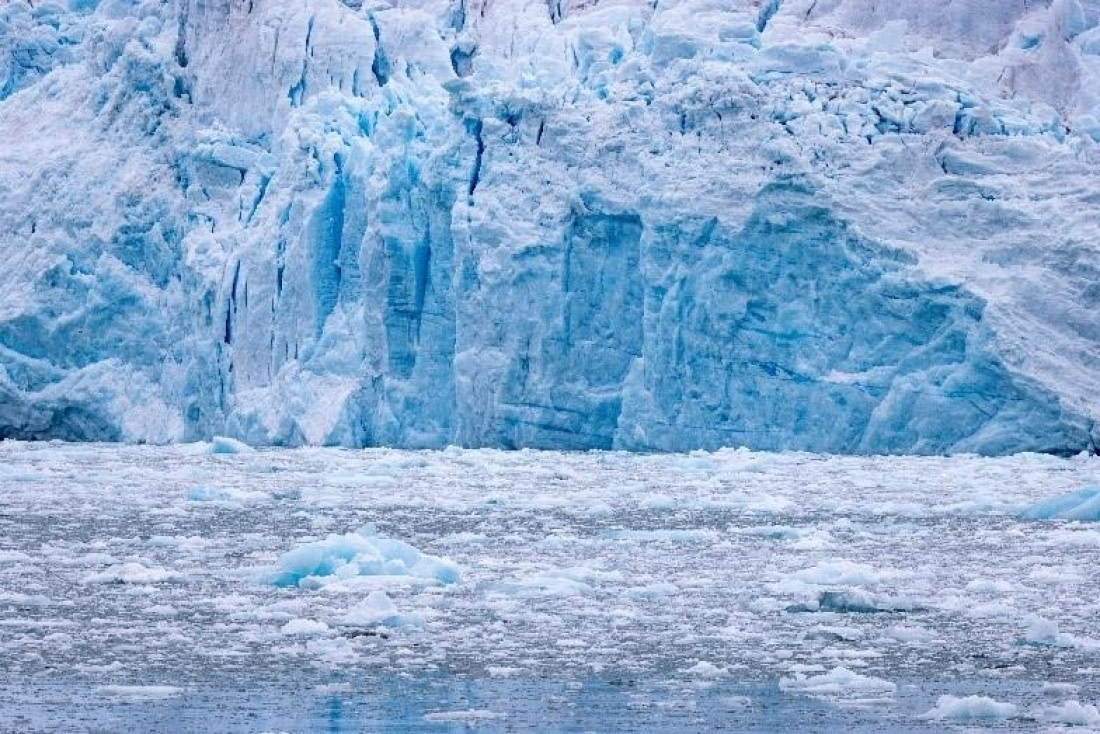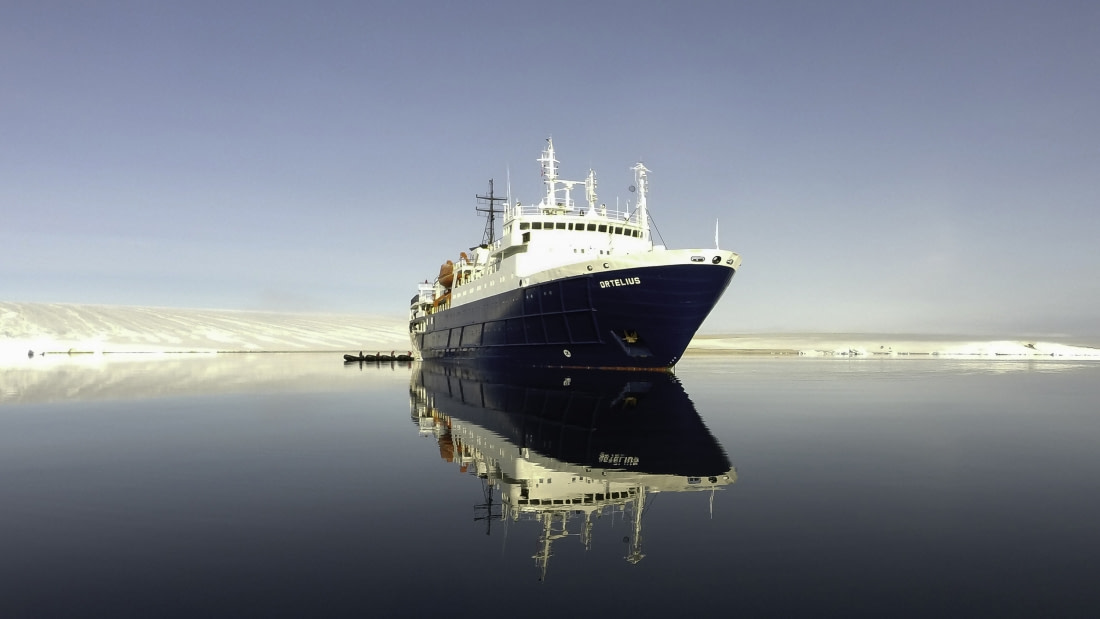| Fecha: | 29.08.2024 |
| Posición: | 78°15,6' N - 015°24,0' E |
| Viento: | S8 |
| Clima: | Nublado |
| Temperatura del Aire: | +8 |
¡Por fin! Había llegado el día, era hora de embarcar en nuestro nuevo hogar para nuestra recién iniciada expedición, ¡el Ortelius! Llegamos al puerto de Coal Harbour en Longyearbyen con aguas tranquilas. Algunos de nosotros sólo habíamos desembarcado unas horas antes y ahora estábamos a punto de comenzar nuestra aventura a bordo del M/V Ortelius. La mayor parte de nuestro equipaje llegó junto con la mayoría de nosotros. Mientras esperábamos en el muelle y nos familiarizábamos con otros pasajeros y tomábamos las primeras fotos de nuestro nuevo "hogar" para las próximas dos semanas, el Equipo de Expedición subió todo nuestro equipaje a bordo. Poco después subimos por la pasarela.
Toda la tripulación y el personal nos dieron una calurosa bienvenida y nos ayudaron a encontrar nuestros camarotes. Con algo de tiempo, exploramos el barco para orientarnos y tomar un té o un café en el bar. Una vez que todo el mundo estuvo a bordo, llegó el momento del vídeo de seguridad obligatorio del barco y de la sesión informativa presentada por la Líder de Expedición Florence y el Oficial Jefe Sjoerd. Nos dieron toda la información que necesitábamos, como movernos con seguridad por el barco, las cosas que podíamos y no podíamos hacer y cómo ponernos los chalecos salvavidas de emergencia. Una vez aprendido todo esto, llegó el momento de realizar un simulacro de abandono del buque, así que después de oír siete toques cortos y uno largo de la bocina del barco, fuimos a nuestros camarotes, nos pusimos los chalecos salvavidas y nos dirigimos a nuestro puesto de reunión en el bar. Luego nos llevaron a nuestros botes salvavidas para que supiéramos dónde ir en caso de una emergencia real.
Tras el simulacro nos dirigimos al bar, donde la Directora del Hotel, Karolina, y la Jefa de Expedición, Florence, nos dieron la bienvenida. Una vez concluidas las formalidades del briefing, llegó el momento de unirnos al capitán Per en el bar para brindar por el viaje. Después llegó el momento de nuestra primera cena, con un delicioso bufé a cargo del chef Heinz y su equipo de cocina, servido por nuestro amable personal de comedor. Después de cenar nos dieron las botas de agua que usaríamos para bajar a tierra; cómodas pero también, y muy importante, impermeables para nuestros mojados desembarcos en zodiac
Tras un largo día de viaje, la mayoría de nosotros nos fuimos a la cama a descansar. Salimos de Isfjorden en dirección norte por la costa occidental de Spitsbergen.
















